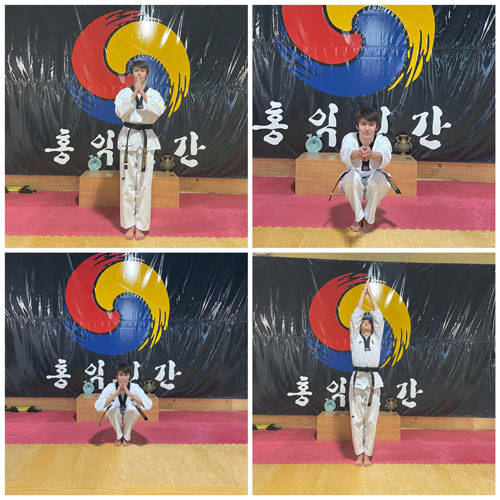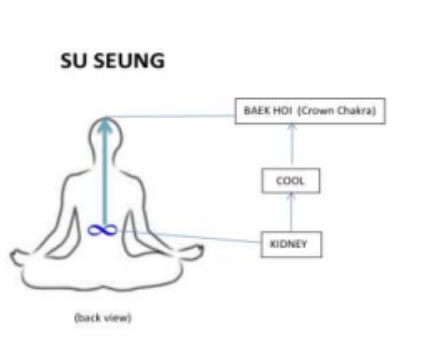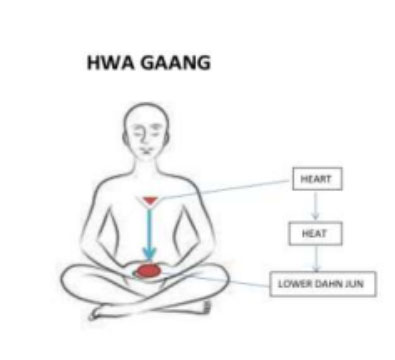
JUNG CHOONG – HISA Theme for March 2022
Jung Choong is accumulation (choong) of physical energy (jung). Physical Energy accumulates primarily in the Lower Dahnjun, which is located 2-3 inches below the navel and one third towards the spine. How is this accumulation manifested? It begins with raising one’s heart rate through exercise, thereby increasing the body temperature and cultivating heat energy. Such heat energy is directed from the heart to the Lower Dahnjun, making the Lower Dahnjun warmer as the heart provides more blood to the small intestines. Warm energy continues its descending path down to the tailbone. It then ascends along the spine, travelling past the kidneys. At the point of reaching the top of the middle spine (DaeChoo), heat energy turns into cooling energy and is delivered to the Beak Hoi (the Crown Chakra) at the top of the head. At this stage, the entire brain is sprinkled with cooling energy.
Cool energy ascending from the kidneys to the Baek Hoi is called Su Seung

Heat energy descending from the heart to the Lower Dahnjun is called Hwa Gaang

As mentioned, Jung Choong training involves raising one’s heart rate through exercise. There are three specific methods in performing Jung Choong training: Chun Qigong, Ji Qigong, and Haab Qigong.
(i) Chun Qigong: this is squat exercises. Please refer to meditative squats on Master Yoo’s Training Guide on the HIMA website. You can also see a Chun Qigong video introduction on YouTube.
(ii) Ji Qigong: this is meditative push-ups. Please refer to meditative push-ups on Master Yoo’s Training Guide on the HIMA website. You can also see a Ji Qigong video introduction on YouTube.
(iii) After Chun Qigong and Ji Qigong, Haab Qigong (sit-up) training is appropriate in order to descend heat energy from the heart back to the Lower Dahnjun. Please refer to sit-ups and tiger pose on Master Yoo’s Training Guide. You can also see sit-ups and tiger pose video introductions on YouTube.
Sushik must be applied at the end of each of these three (Chun Qigong, Ji Qigong, and Haab Qigong) exercises, ideally at least 30 times.
